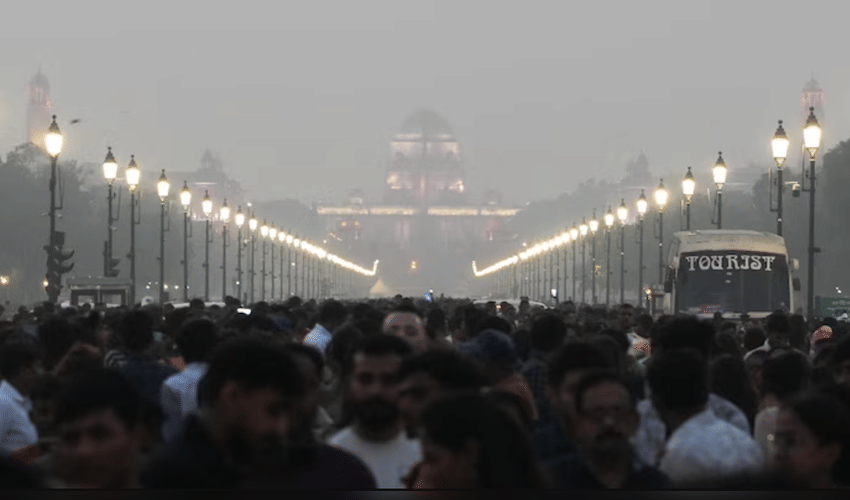News
Toxic Smog Engulfs Delhi: Air Quality Remains "Very Poor" with Many Areas in Red

A dense blanket of haze continues to cover Delhi as the city’s air quality remains in the “very poor” category, with several areas slipping into the “red zone.” According to the latest data from the Central Pollution Control Board (CPCB), the Air Quality Index (AQI) stood at around 345 early Monday, signaling an alarming environmental situation for residents.
The smog has persisted across Delhi, with AQI readings fluctuating between 300 and 400 in many locations, indicating very poor to severe pollution levels. Areas such as Anand Vihar, ITO, Rohini, and Wazirpur recorded AQI values nearing or surpassing 370, while Bawana was marked as severe at 412. Surrounding regions, including Noida, Greater Noida, Gurugram, and Faridabad, have also reported very poor air quality, worsening the National Capital Region’s overall pollution scenario.
These dangerously high pollution levels pose serious health risks, particularly to children, the elderly, and individuals with respiratory illnesses. Prolonged exposure can lead to breathing difficulties, throat irritation, and aggravated asthma symptoms. The thick haze not only reduces visibility but also disrupts daily routines and outdoor activities, emphasizing the urgent need for effective intervention.
Experts attribute this seasonal spike in pollution to several factors. Falling temperatures and low wind speeds trap pollutants near the surface, while vehicular emissions, construction dust, and industrial pollutants add to the particulate matter. Post-Diwali firecracker residue and stubble burning in nearby states further compound the smog, creating a toxic mix across the capital.
While the Graded Response Action Plan (GRAP) Stage 3—which imposes stricter anti-pollution measures—remains on hold, authorities continue monitoring the situation. Current mitigation efforts include enhanced street cleaning, dust control, and emission checks. Meanwhile, citizens and activists have taken to public demonstrations, urging stronger government action to protect public health.
Forecasts from the Air Quality Early Warning System suggest that air quality is likely to remain “very poor” over the next few days. Residents are advised to limit outdoor activities, especially during early mornings and evenings, use air purifiers indoors, and wear protective masks when outside. Delhi continues to grapple with a severe air pollution crisis, as a heavy haze engulfs the city and AQI levels remain dangerously high. Without coordinated action and public awareness, the path to cleaner air and healthier living remains a distant goal.



